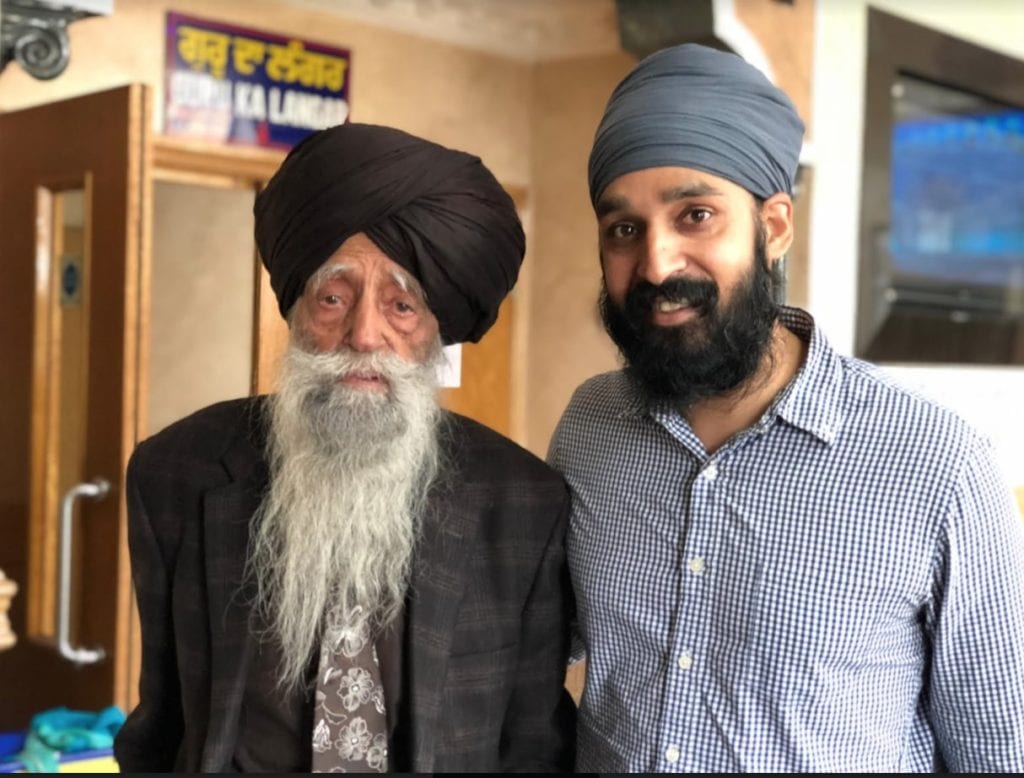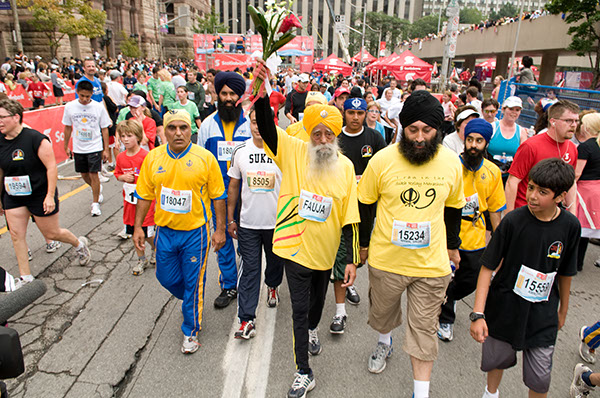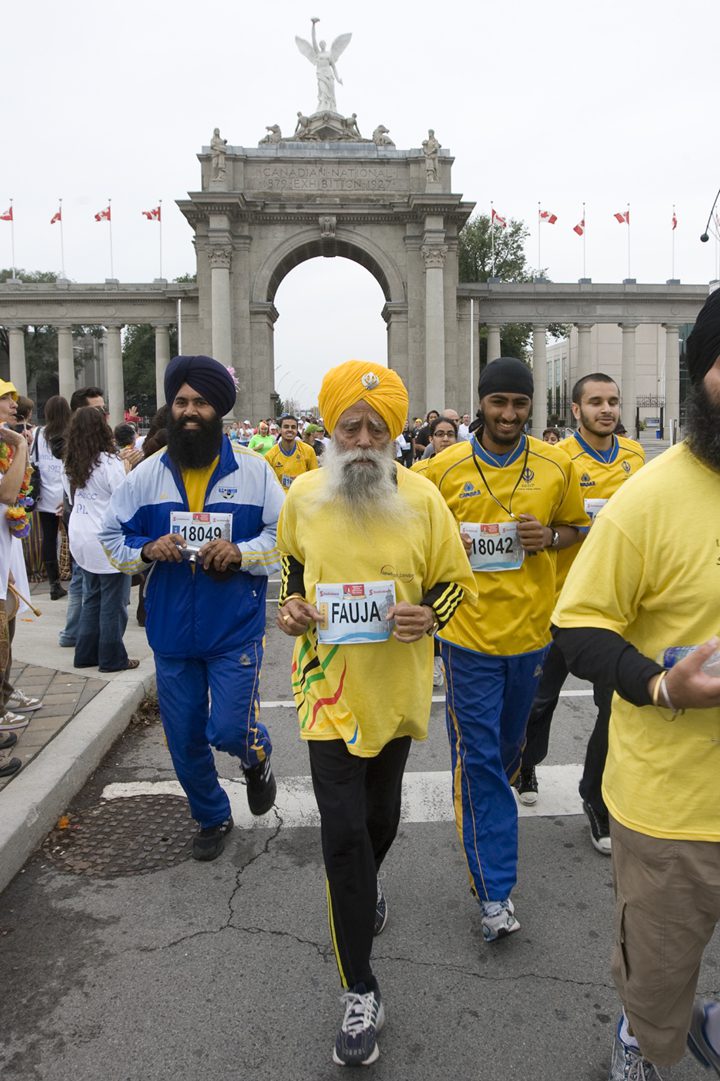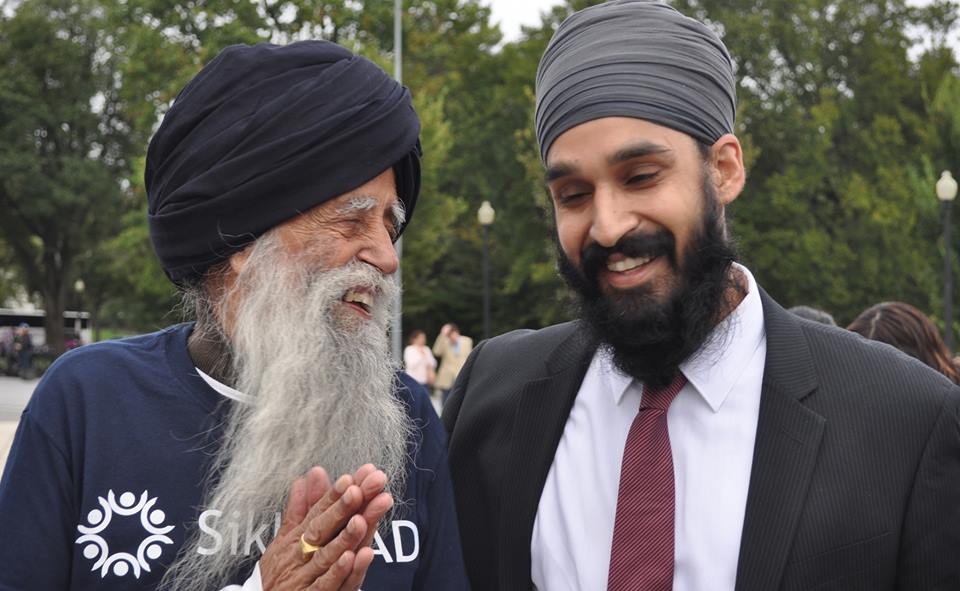The story behind ‘Fauja Singh Keeps Going’
This new children’s book is about so much more than Fauja Singh's marathon results

When Simran Jeet Singh was a boy growing up in Texas, he never saw himself represented on television or in books. Singh is a Sikh, and he told himself that when he was older, if there were still no books with Sikh characters on the shelves, he would write one. He didn’t know what it would be about, but he knew it would be focused on someone who looked like him. Many years later, he found his inspiration: Fauja Singh, the oldest marathoner in the world. After following the centenarian runner’s story for years, Singh has finally made good on the promise he made to himself as a child with his new book, Fauja Singh Keeps Going.

Inspired to run
The author, who now lives in New York City, first learned of Fauja when he saw him in an Adidas ad alongside Muhammad Ali and David Beckham. Curious to find out who this mystery Sikh runner was, Singh did some research. “I’d been waiting for this my whole life, so I of course looked him up,” Singh says. “When I found him, it disrupted my whole bias toward what an athlete can look like.”
RELATED: Oldest marathoner Fauja Singh recognized by Queen
Singh had never enjoyed running, but after learning about Fauja, he was inspired to give the sport another try. When Fauja became the first 100-year-old in history to finish a marathon (a feat he accomplished at the Scotiabank Toronto Waterfront Marathon in 2011), Singh signed up for the New York City Marathon. “That’s when I started developing a love for running,” he says.
After being so inspired and excited to race — a feeling that many runners can relate to — Singh experienced something a little less common, at least for white runners: he faced verbal and even physical abuse on the course. Several people along the route yelled racial slurs, and a group of kids threw rocks at him.

“I thought I’d left racism behind when I started that race,” he says. “But I knew of the racism Fauja had dealt with in his own race years before. There was comfort in knowing I wasn’t alone in that. That was really helpful to me in that moment.”
Singh has raced many other marathons, and his experience from that first race was not an isolated incident. On one occasion, once again in New York, a volunteer called him a “filthy Muslim,” which he says really took him by surprise. “I was so tired that I didn’t even register what was happening until later.” There would be three other similar moments in store for Singh that day.
He tweeted about his encounter with the volunteer and the following three episodes, and he said there was an interesting duality to the whole event. “On the one hand, I was dealing with the annoyance of these moments,” he says, “and on the other hand, I got messages from race officials on my phone offering support, along with messages from other runners and people following along. That was a really nice reminder of how supportive and progressive our running community can be.”
RELATED: Fauja Singh runs his last race in Hong Kong
Fauja Singh’s journey into running
The story in Fauja Singh Keeps Going starts long ago, taking a look at the life of Fauja from his early days growing up in Punjab, India. For the first five years of his life, Fauja couldn’t walk, and despite being told he never would, he didn’t give up. Just after his fifth birthday, after years of hard work, he was finally able to walk on his own.

When he grew up, he got married and had kids. Many years later, after his wife had passed away, Fauja moved to England, where his children lived. It was there, at the age of 81, that he saw a marathon broadcast on television and decided to try it himself. He worked for years to get strong as a runner, and at 89, after hiring a coach, he became one of the oldest finishers of the London Marathon.
A few years later, at the age of 93, Fauja decided to race the New York City Marathon. “His decision to run in New York City was actually spurred by the hate after 9/11,” Singh says. “He wanted to help his siblings in the U.S. who were dealing with the hate toward Sikhs.” Fauja ran in New York City and received the same attacks and abuse that Singh would receive almost a decade later at the same race. Singh’s book explains that Fauja managed to finish the race, but it wasn’t enough for him.
“Fauja had wanted to run fast and show the world what Sikhs could achieve,” Singh writes. “But he felt like his poor performance at the world’s biggest marathon made him look weak and that he had failed his Sikh sisters and brothers all over the world.” Part of him thought it might be time to retire from running, but he silenced that voice and continued to train. Seven years later, at 100 years old, he raced in Toronto, inspiring Singh and countless other runners — Sikh and non-Sikh alike — around the world. Fauja did eventually retire, but not until he was 104. Now 109, he still lives in the U.K.
RELATED: A 99-year-old named Champ to race 100-year-old at the Penn Relays
Why Fauja Singh?
As already noted, Singh spent years dreaming of writing a story with a Sikh protagonist, and his reason for choosing Fauja for that role is a very personal one. “Fauja was in New York for a race as a celebrity guest in 2016,” Singh says. “My older daughter had just been born, and he sat there, in my living room, and held my daughter in his lap as he told me about his life. I was getting all this wisdom from him, and I thought ‘I wish my daughter could just absorb everything that he’s saying.’ It was in that moment that I decided this was a story that needed to be told.”

Singh adds that he believes it’s important to tell stories about the “challenging realities” of the world. “I don’t think we do a good enough job talking to our kids about these things,” he says. “We end up ignoring them, which is a disservice to our kids. We pretend these ugly incidents aren’t part of our own communities, and as runners, we like to think we’re more progressive and inclusive. We like to think these things couldn’t happen, but they do.”
Singh wrote this book to tell Fauja’s incredible story, to start the tough conversation about racism in running, to “help normalize our unique appearance” and to fulfill his childhood dream of seeing a Sikh on the cover of a book. “All of these things help our kids reimagine what our heroes can look like.”
To learn more about Simran Jeet Singh and his book, visit his website here.


